Misi
Can vegetables, pasta, and gelato ever really go out of style?
Misi’s signature dish is somewhat hidden on the menu. You’d think, with how emblematic that perfectly piped zigzag of whipped ricotta sitting atop crusty bread is, that it would be the very first item listed — or at least labeled as something easily identifiable, like, I don’t know, “ricotta toast.” But it’s not.
The dish that, I’d imagine, every single table orders, moves around within the antipasti section of Misi’s streamlined menu. Sometimes it’s placed second, occasionally second-to-last — always somewhere in the middle. I always have to take a careful scan of the menu to spot it.
In the spring and summer, it’s listed as “charred marinated peppers.” In the fall and winter, “trumpet mushrooms sott’olio.” “Whipped ricotta crostini” rounds out the description, as if the pillowy cheese on toast were a complement to the bowl of vegetables, and not the other way around.
There’s a quiet confidence in downplaying your best seller — in knowing what you’ve got and not feeling the need to flaunt it. Misi excels in that kind of restraint, which runs deeper than its menu layout; it’s baked into the entire experience.
My first visit to Misi was in February 2022. Mitch, Maverick, Tom, and I settled into a four-top along the left-hand wall of the sleek dining room, decked in Italian hand-cast brick. Tom and Mav had a view of the open kitchen, while Mitch and I looked onto the glass-enclosed pasta-making workshop, which sat idle after a presumably busy morning of prep. We were all a little dolled up — collared shirts, wristwatches. This was a special one we were checking off, a restaurant we’d all been hearing nothing but praise about.
Three vegetables, five pastas, and two gelatos later, I was completely enamored. At the time, I had about six months of New York dining under my belt, and Misi leapt straight to the top of my list. The experience was as close to perfect as I’d had dining in New York. It felt great to be in that room. The service was tight and polished — prompt but never frantic, personal but with a relaxed energy. Every dish was precise — clean presentations and hearty portions that didn’t require careful rationing. The pacing was ideal; the coursing made sense. There’s an intentional absence of secondi, but I didn’t find myself missing the meat or fish — vegetables and pasta were more than enough. It was the first time I was truly blown away by simplicity. Every component of every dish felt like a higher-quality version of something I already knew.
There were a few culinary revelations that day, and the whipped ricotta crostini was, surprisingly, one of them. Surprisingly, because, like most prolific dishes, I was prepared to be underwhelmed. But I left a true believer. The squiggle of silky-smooth cheese sits tall, about an inch above the surface of the toast. As you bite in, it’s cloud-like — light, airy, creamy, and tangy, yet thick enough to hold its shape. Olive oil hits your lips, flakes of sea salt add gentle texture. Then you reach the crisp surface of the Shewolf sourdough, fried in olive oil. There’s a crunch, but it’s not sharp in a way that’ll tear up the roof of your mouth.
The second bite was even better. An olive oil-soaked trumpet mushroom, seasoned with a hint of rosemary, was applied to the corner opposite the first bite. The mushroom settles into the cheese like a heavy head sinking into a pillow. Introducing umami into the bite is heavenly beyond belief. And it clicked why the veg is listed first: the mushroom is supposed to go on top. This will remain a top New York City dish for as long as Misi is around.
The first taste of tortelli was, similarly, absurdly memorable. It’s a dish that’ll never leave the ten-pasta rotation — and for good reason. The spinach-and-mascarpone-stuffed rings are a treat: swimming in brown butter, blanketed by ricotta salata, an indulgent sweet-and-savory burst. I wouldn’t want a dish this rich for myself, but if you’re a table that’s sharing (and every good table should be), it needs to be ordered. I’ll never forget Maverick’s earnest exclamation: “Woah, it’s like an Italian gusher.”
To say I left excited about Misi would be an understatement; I was singing its praises to anyone who’d listen. I rattled it off confidently among my favorite restaurants in the city.
My subsequent visits hit just as hard. I brought Mom and Dad. I sat at the bar on my birthday. My brother and I slid into a pair of seats at the kitchen counter on a random summer day. Tom and I ran it back, this time with Emma and Hannah. I wanted everyone I knew and loved to experience pasta at its best. There are plenty of good Italian restaurants in New York, but no one was running an operation quite like Misi.
Across those dinners, it became clear that restraint was what I was drawn to. Misi knows where to leave blank space. They know when to subtract — nothing about the restaurant feels overdone. Quanto basta is their mantra, meaning “as much as necessary.” It’s reflected in everything about the place.
There’s restraint in the design of the room: minimal, uncluttered; hexagonal gray-tiled floors; earthy, natural tones; warm light cast from hand-blown glass bulbs. There’s no artwork, because the surroundings are stimulating enough. The open kitchen stretches the entire length of the right wall — a spectacle itself. The front entrance faces west, with floor-to-ceiling windows offering a glimpse of the Manhattan skyline and the Williamsburg Bridge. Golden hour light floods the room in early evening; the blinds are gently drawn as the glow fades over the East River.
And there’s certainly restraint in the food.
Misi’s rigatoni comes in a red sauce that punches well beyond its description. The short, tubular noodles curve ever so slightly, coated in a deeply savory 30-clove pomodoro, dusted in pecorino, and delicately garnished with basil. I know it’s hard to order a dish that sounds like something that could be whipped up at home in a matter of minutes — but the sauce’s complexity and the tender bite of the pasta are unfathomable to even the most functional home chef. It’s simple, yes. But anything more added to this dish would surely result in less. It’s balanced and wonderful. As much as necessary.
Fettuccine glistens with a sheen of buffalo butter, topped by a mound of sharp parmigiano extra vecchio and a generous sprinkle of cracked black pepper. It’s another dish that flexes its ingredients — not the quantity or rarity of them, but their quality. More complex-tasting cheese and punchier pepper than you’ll find anywhere else.
Misi is one of the few places where the antipasti feels like more than an opening act. The preparations are simple, but painstakingly considered. Halved, slow-roasted tomatoes sit pulp-side up, drizzled in hot honey, finished with fresh basil, coriander, and fennel seed. Grilled romano beans are tossed in a garlic vinaigrette with punchy chilies. Leeks are marinated in Calabrian chili oil, then braised, and finished with a liberal sprinkle of pistachios. This section of the menu changes more dynamically than the pastas — the vegetables shift with the seasons, as do their preparations.
There are a few menu mainstays I don’t care for. The chickpea pappardelle is one that servers always try to talk you into, insisting it’s “so much better than it sounds.” But texturally, the pasta has a graininess that turns me off and quickly goes mushy. The linguine with anchovy, garlic, and parsley tastes unbalanced — acidic and funky beyond the point of interest. Otherwise, I don’t think there’s a miss on the menu.
Misi is synonymous with the vegetable and pasta duo, but gelato is the third component to the experience — and it’s worthy of a mention. It’s a classic slate of flavors that might not initially excite: Fior di latte, espresso, pistachio, chocolate, a few others. But once again, it’s the execution that matters most — exceptionally creamy, soft, and loaded with generous chunks of whatever flavor you choose. In my personal hierarchy, pistachio has the edge, but mint stracciatella trails tightly behind.
You’re probably wondering where this story goes wrong. And while there’s no dramatic turn to the tale, over my past few visits, I’ve felt a subtle shift.
For a while, Misi felt like a restaurant chasing something — every visit as sharp and deliberate as the first. It seemed immune to the inevitable fade of a restaurant’s early momentum. When I first went, three years past its 2018 opening, Misi still carried the energy of a place with something to prove. By year three, most restaurants have figured out who they are and how they run, but haven’t yet slipped into complacency. 2022 Misi felt like it was gunning for stars, rankings, and accolades. There were hardly any missteps. Everything felt dialed.
In 2025, in year seven, Misi feels more content. More relaxed. It doesn’t seem to be striving for anything beyond what it already is, but rather settling into the calm of mastery. It remains a tremendous restaurant with a near-perfect menu, and quanto basta certainly persists. But the press has simmered down, and the stars never came. Yet through it all, they’re paying the rent, and it’s still a tough table every night of the week.
I wonder if that calm comes at a cost. Is it complacency, or just confidence? Is it settling, or self-assurance? Maybe it’s just the natural rhythm of a restaurant’s life — the same way people trade ambition and hustle for stability and balance. What at times feels like a loss of the magic might just be the transition from newness to permanence — from hot to established, from exciting to enduring. A restaurant can’t stay young forever. Maybe it’s allowed to mature. Still, Misi today feels less like a spontaneous, anything-could-happen affair and more like a well-oiled machine.
Or maybe, just maybe, it’s me who’s changed.
Maybe the diner I was in 2022 — starry-eyed about New York and eager to experience everything the city had to offer — wouldn’t have been so particular or hyper-observant. Maybe the bucatini that came out warm-but-not-hot wouldn’t have raised any concerns.
I’ve had so many formative meals since that first visit. I’ve learned what separates good from great, and more importantly, what excites me: the precision, the intention, the human touch. I’ve felt the high of tight, buzzing rooms where the owner pours your wine, and the dishes linger not just for their flavor but for their warmth. Maybe what excites me about restaurants now is a little different than what excited me then.
Regardless of which of the above is true, there are a few things I know for sure.
I will always look forward to settling into that glowing room on Kent Avenue. I’ll always watch from the corner of my eye as the chefs make their final toss of the chitarra in bright red sauce. And I’ll always be hunting for that damn whipped ricotta on the menu.
This was a restaurant write-up from Mr. Flood’s Party. Subscribe for free and get Flood’s delivered every week. If you feel inclined, consider becoming a paid subscriber and supporting the creative process.




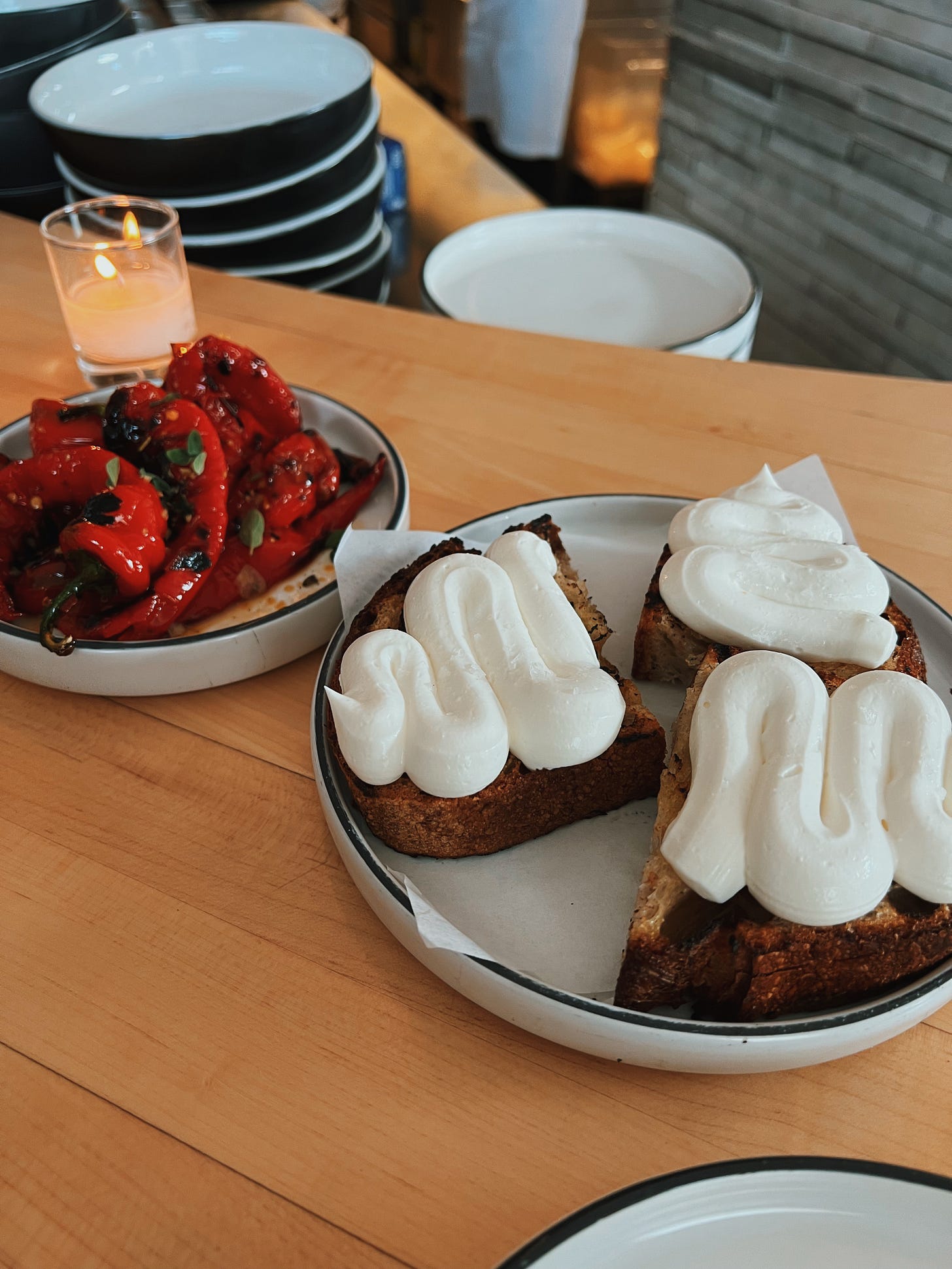
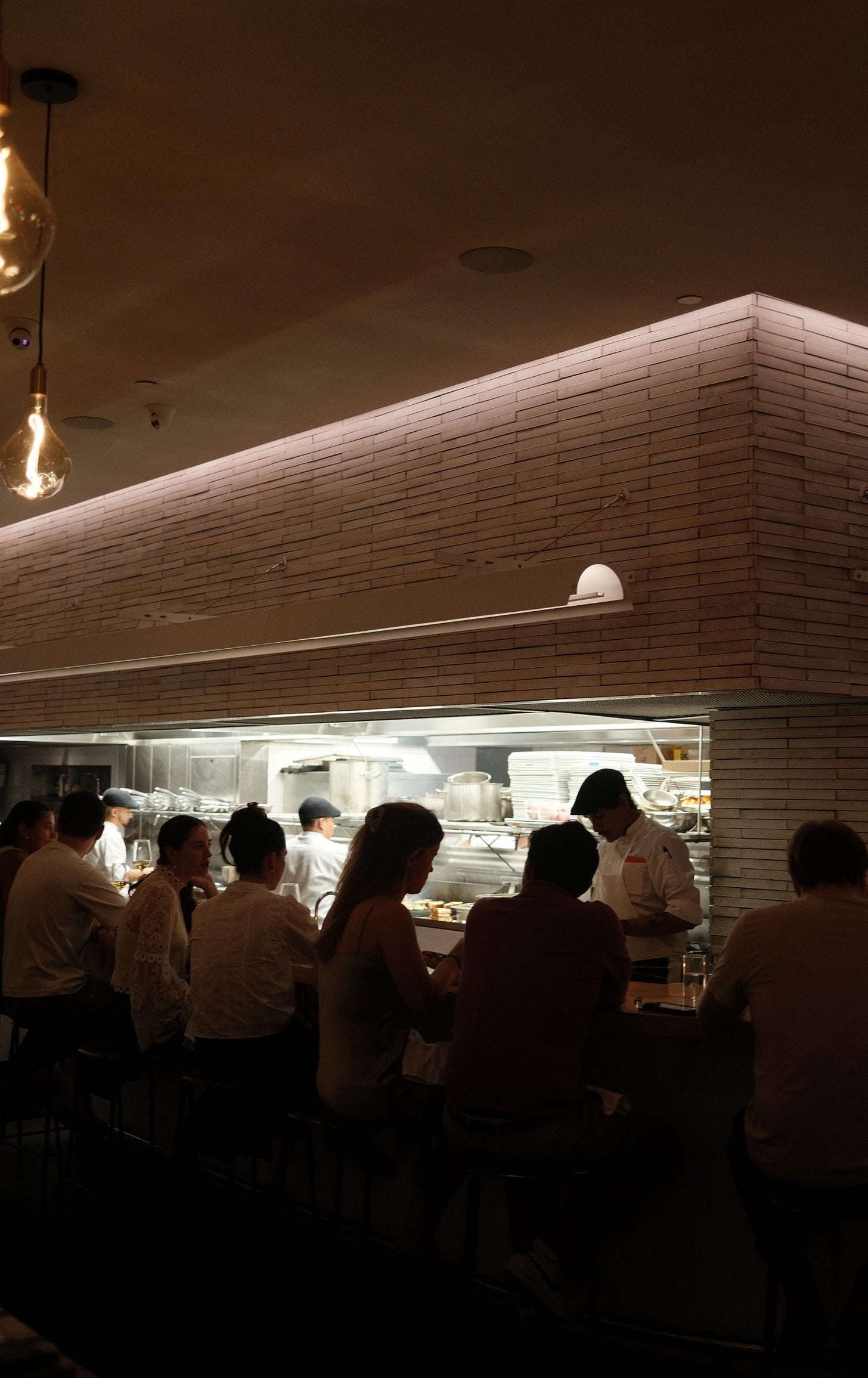
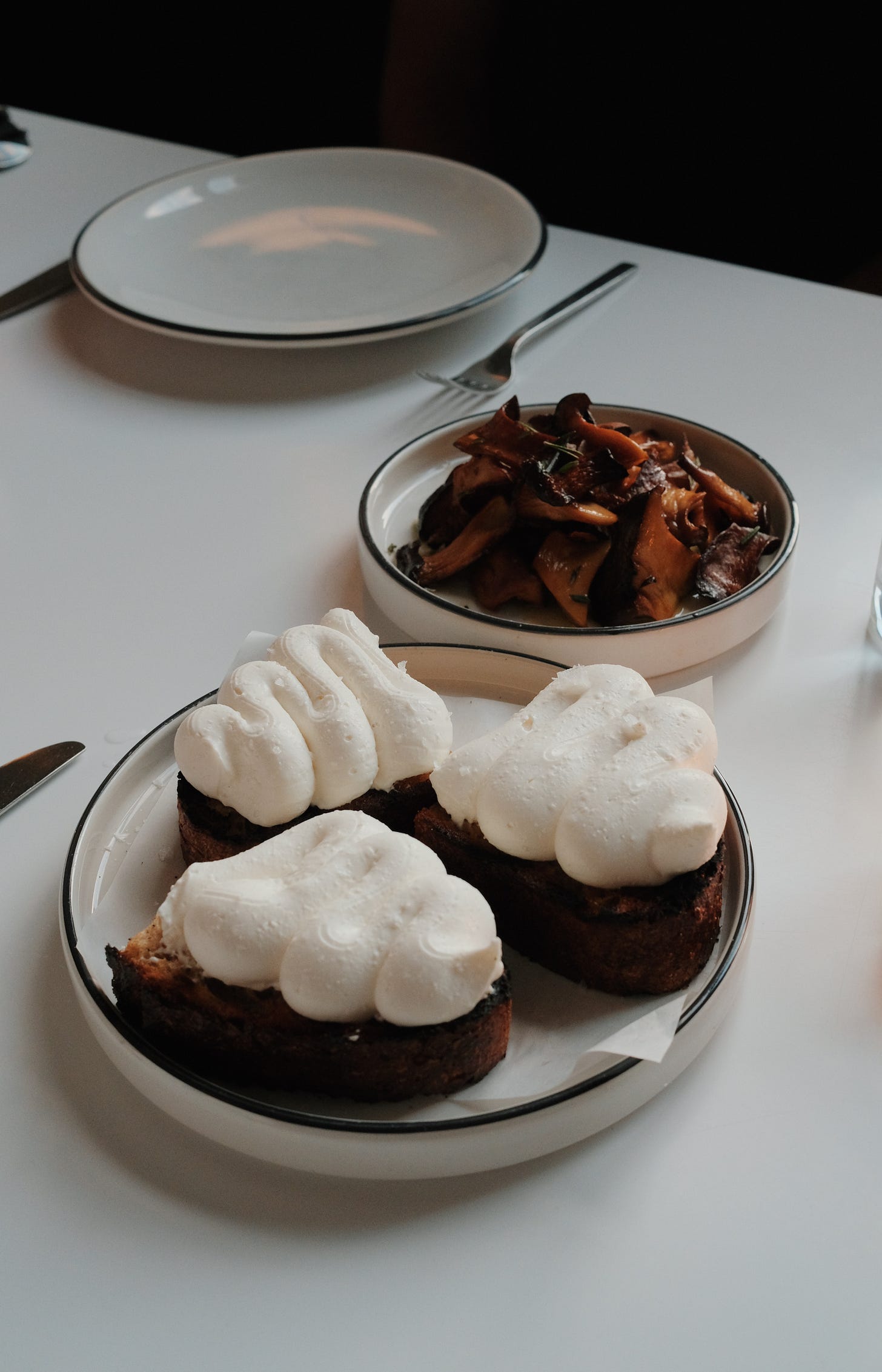
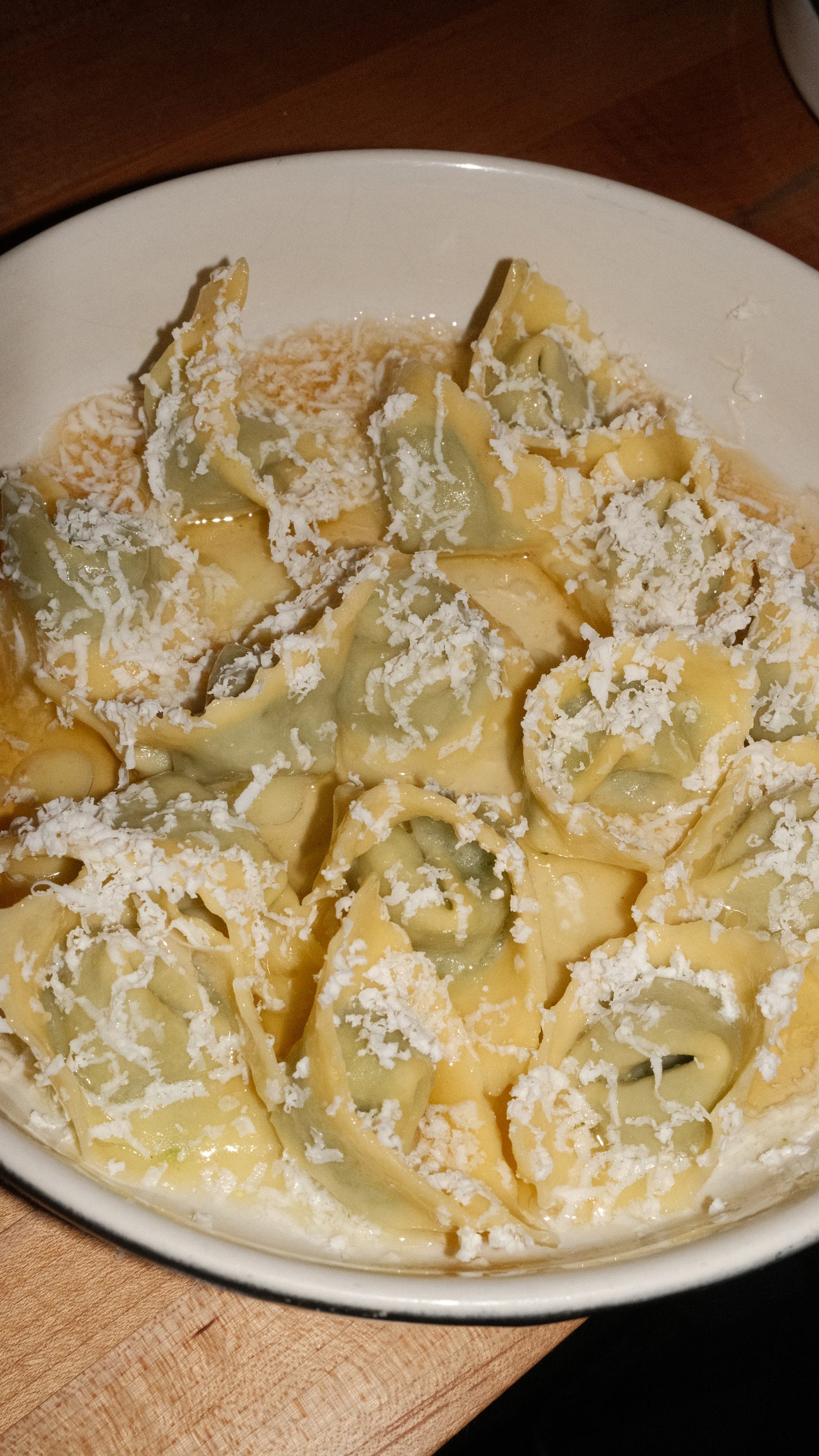


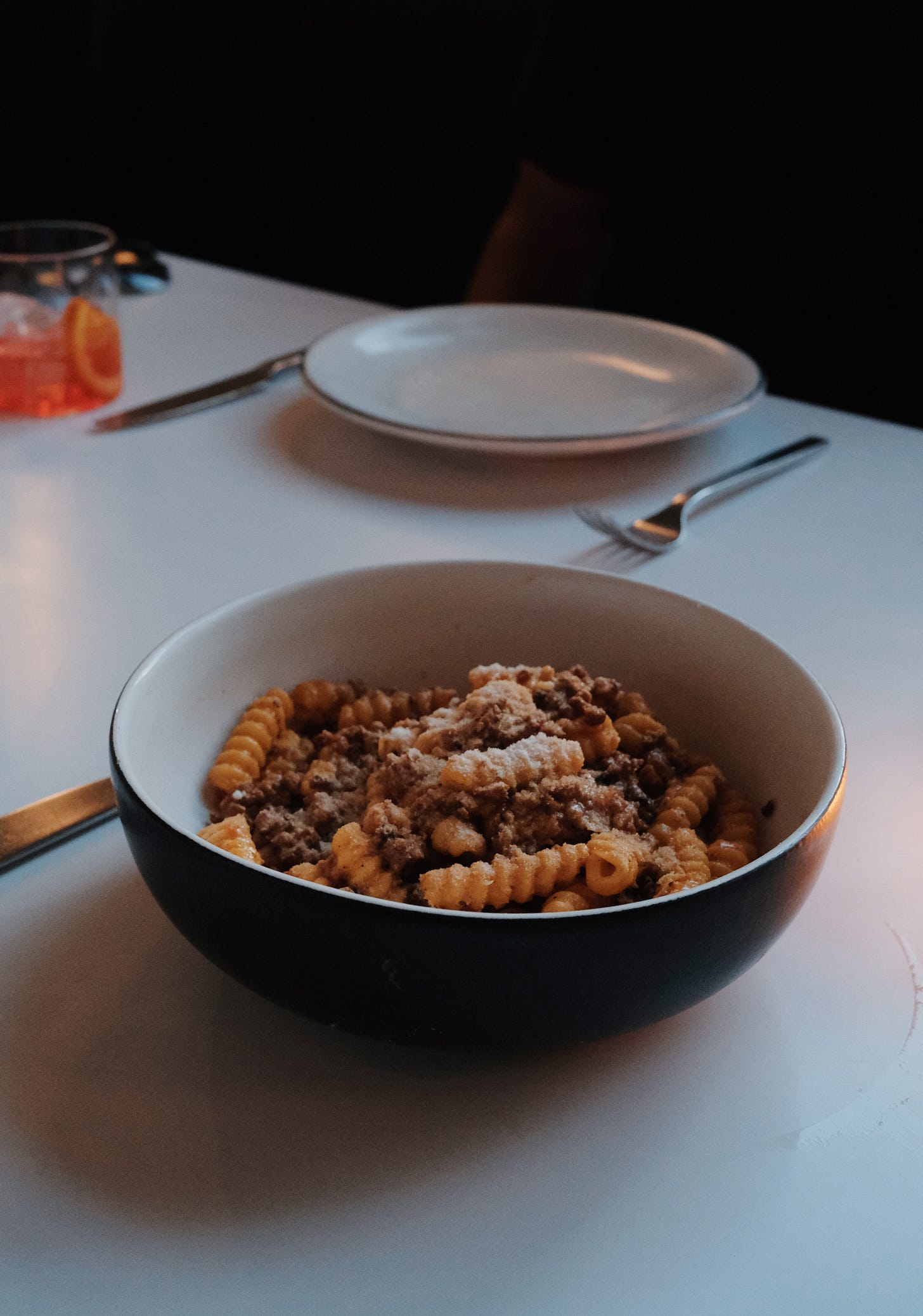
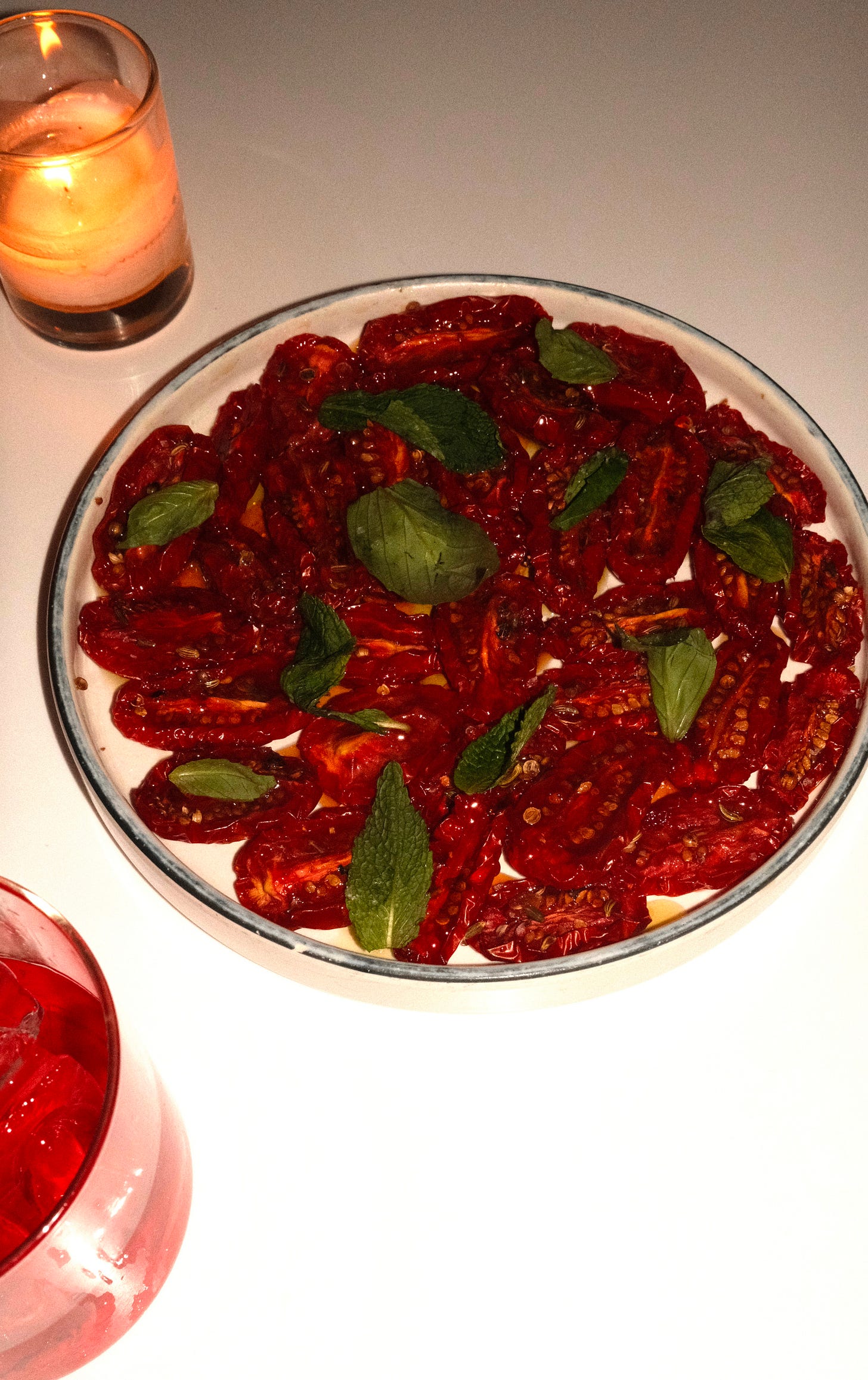

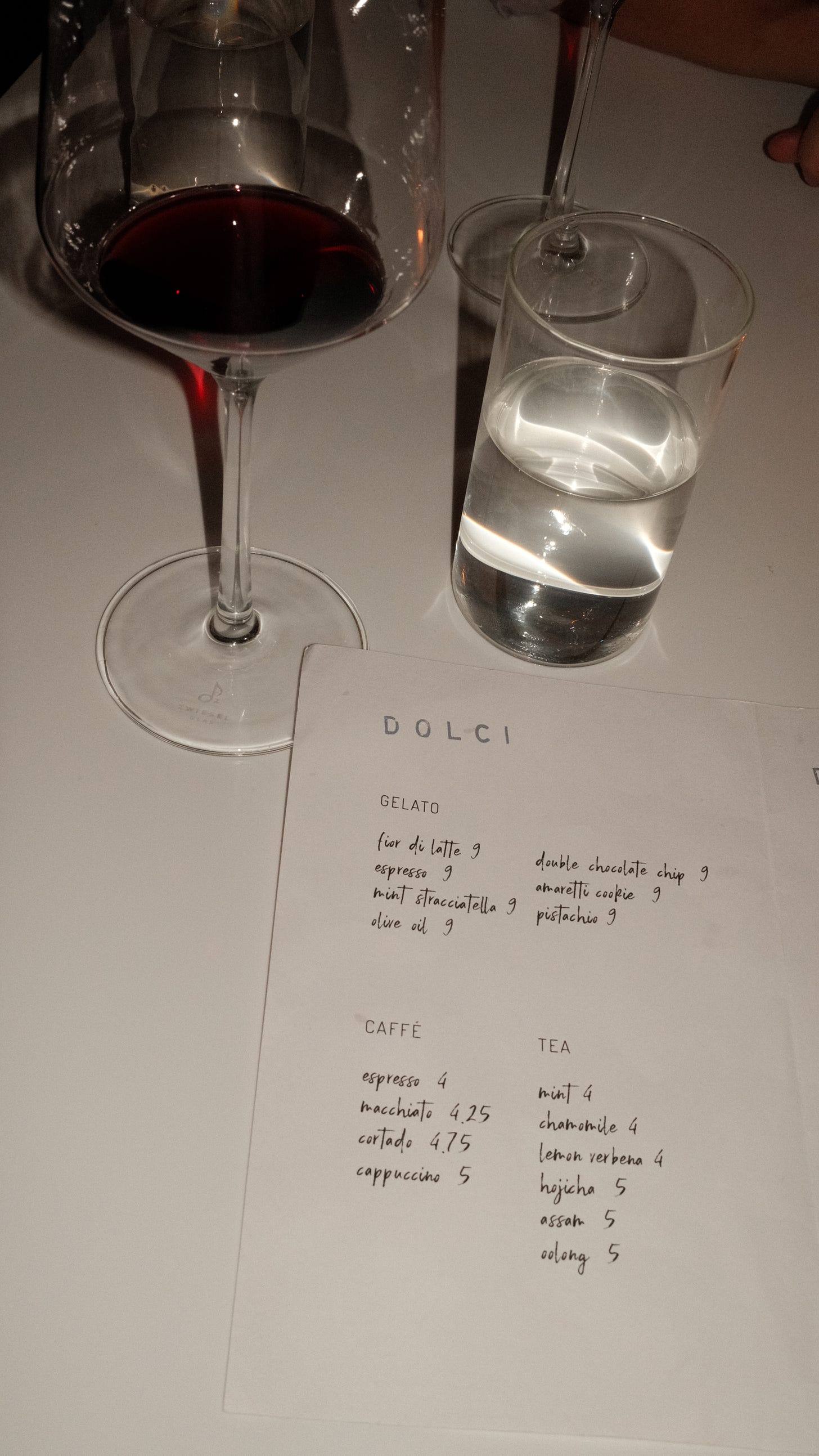

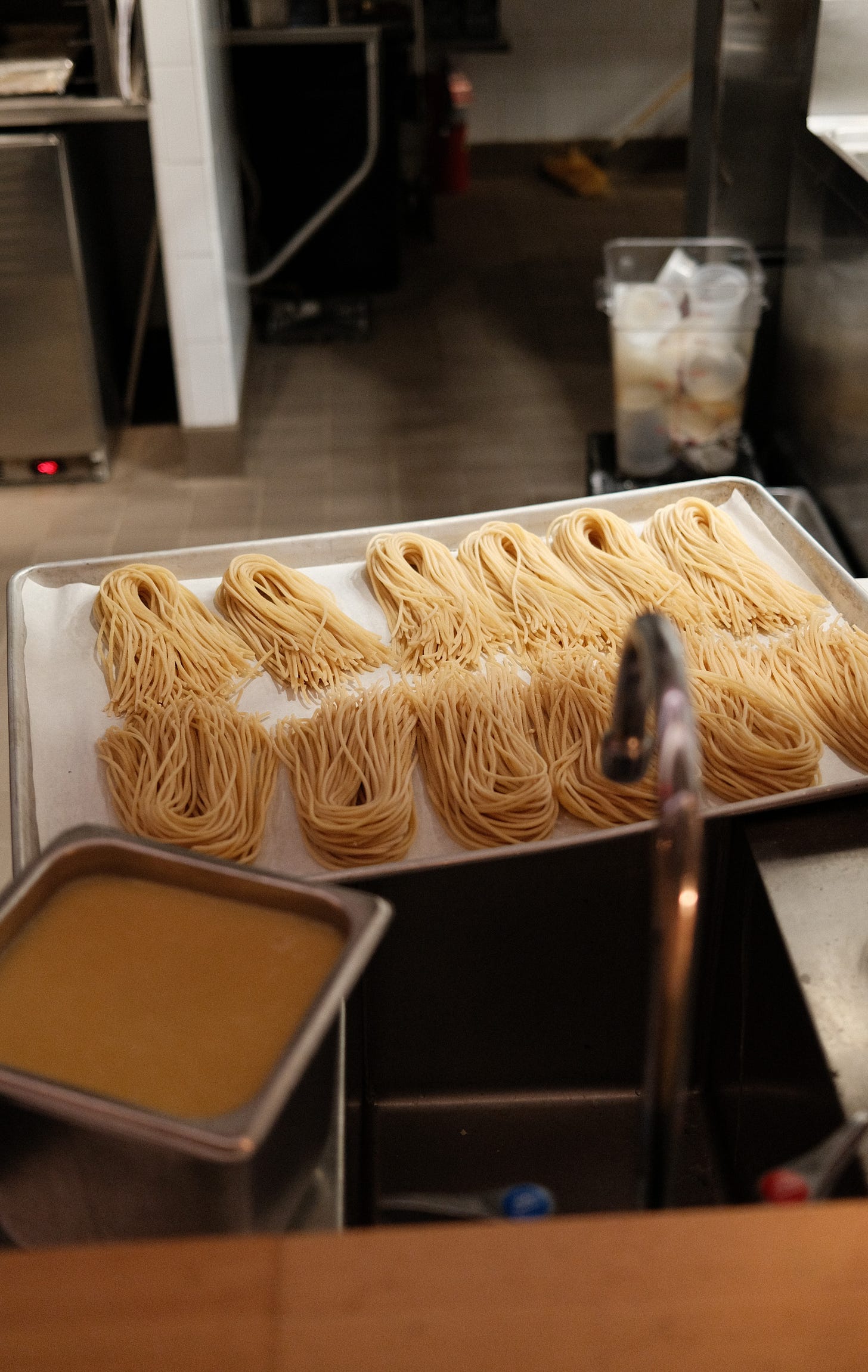
As a former Misi cook and understudy to Missy Robbins, I would not say the whipped ricotta crostini is the signature dish. It’s a big seller but in my opinion not the heart and soul of what has made Misi so special to so many of us. It’s certainly the most tiktok-able and fodder for the trend obsessed.
If there’s anything I learned from my time it’s that Misi *was never* the kind of place that gave one damn about seeking “stars, rankings, and accolades.” This point is misunderstood by those that peddle this vapid accolade and hype culture. food is food